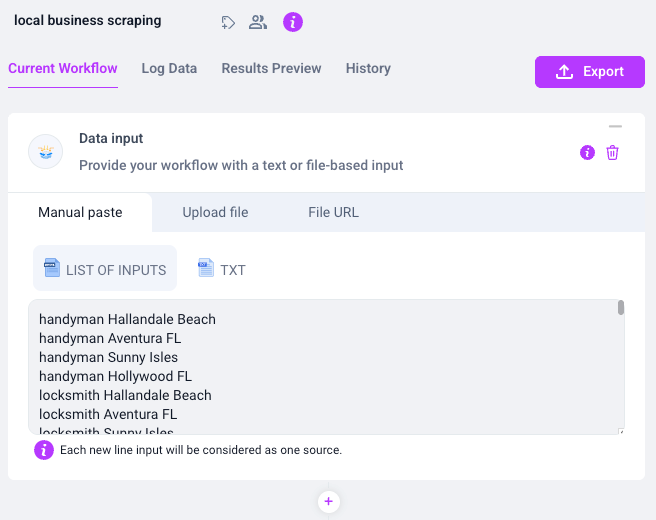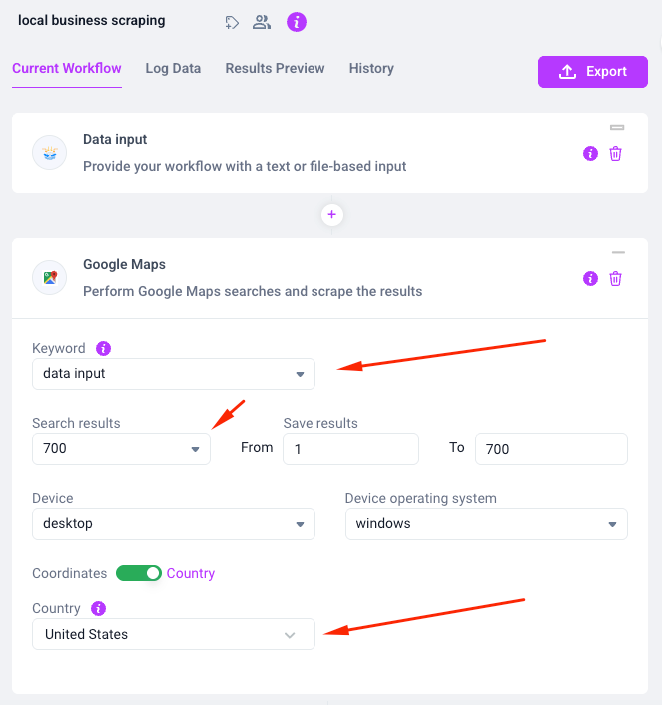Here’s Exactly How to Scrape Google Maps Data Step by Step
A simple guide to pulling local business and Google Business data for leads, research, and growth
Many of our customers keep asking how to scrape local business data from Google Maps. This guide breaks it down step by step, with practical examples and the exact workflows you can set up.
Step 1: Define the right keywords for your scraping task
Before building any workflow, decide what you want to extract. The most common data points are:
Category or service type (e.g., plumber, dentist, HVAC repair, grill cleaning)
Address details (state, city, neighborhood, street, or even zip code)
Think carefully about your search keywords. Google Maps scraping works exactly the way you search in your browser, it just scrapes all results one by one. The more precise your query, the better the results.
Examples of useful searches:
By service + city: “grill cleaning Miami,” “roof repair Brooklyn,” “dog grooming Chicago”
By zip code: “plumber 33139,” “dentist 10001,” “electrician 60614”
By street address: “restaurants near 123 Main Street, Los Angeles,” “coffee shops near 200 Biscayne Blvd, Miami”
By neighborhood: “real estate agent Brickell,” “cafés in Williamsburg”
💡 Pro tip: Use ChatGPT to brainstorm a keyword list with synonyms and variations, so you don’t miss potential leads.
Step 2: Create your workflow
Start by selecting Data Input as your data source.
Paste in your keyword list (the searches you want to run).
Add the Google Maps automation to your workflow.
Adjust settings:
Search results – Number of listings to capture: You can scrape up to 700 listings per keyword. Keep in mind, not every keyword will have that many results.
Geo-targeting if you want to limit by area
Bonus Step: Clean and enrich your data
The raw scrape is only a starting point. To make the data useful, you need to decide what stays and what goes. Filtering depends on your goals, so think about what kind of businesses are worth your time.
Ideas for filtering:
By reviews:
Exclude businesses with fewer than 25 reviews if you only want established players.
Or target those with a rating below 4 if you’re looking for businesses that might need your help to improve.
By website presence:
Keep only the businesses that have a website if you plan to enrich the data further or reach out by email.
By duplicates or non-qualified entries:
Always clean your dataset to remove duplicates or irrelevant listings (like chains or businesses outside your target area).
By location:
Focus only on businesses in certain neighborhoods or zip codes if you want ultra-local targeting.
Once your list is qualified, enrich it with another workflow:
Scrape emails and social links from business websites.
Extract deeper info such as services, pricing, or team members.
Build a complete profile for outreach or competitive research.
Final Thoughts
Scraping Google Maps data is not just about pulling lists. It’s about building high-quality, targeted datasets you can use for sales, marketing, or market research. The process is simple: search smart, scrape cleanly, filter results, and enrich with more details.
With the right setup, you’ll turn Google Maps from a directory into a powerful lead-generation engine.
And if your needs are more complicated or you’d rather skip the setup, you can always order our Concierge Service. We’ll build the workflow for you, guarantee results, and deliver a ready-to-run template straight into your account.



